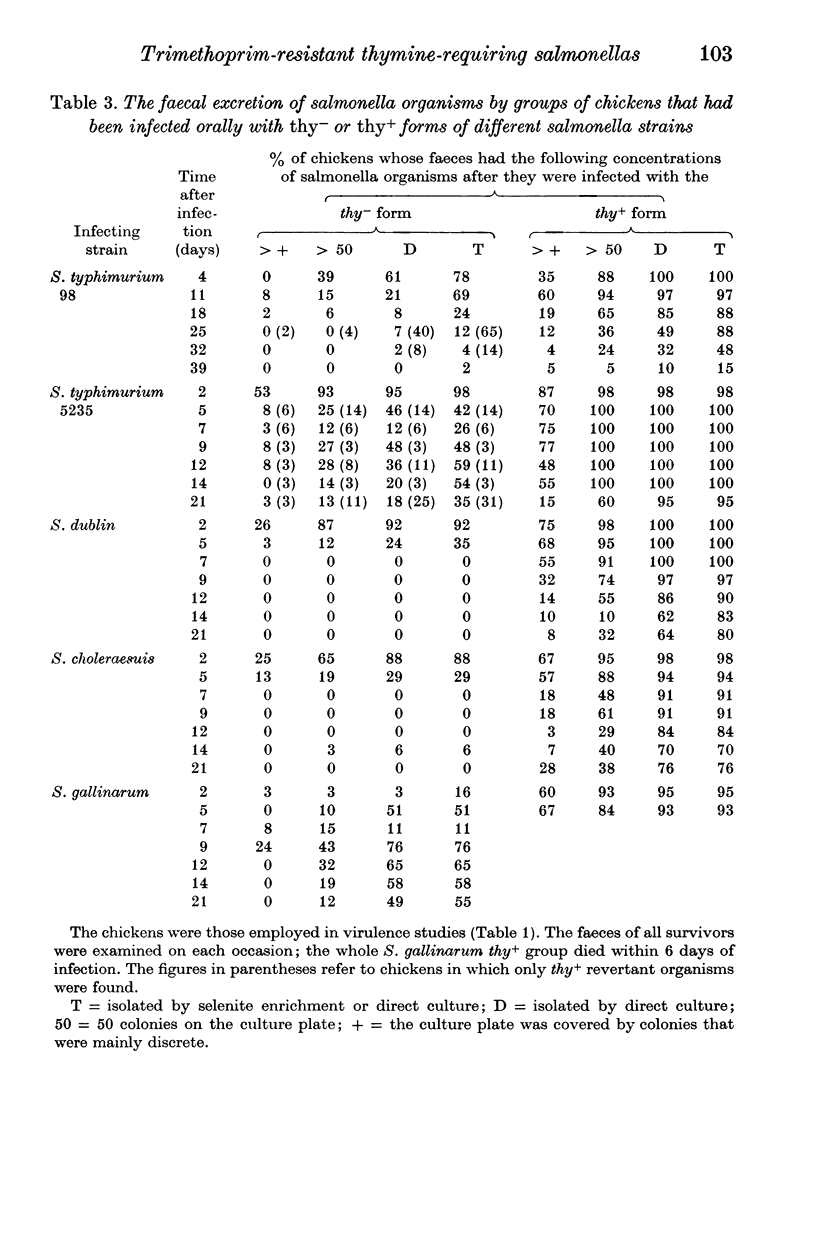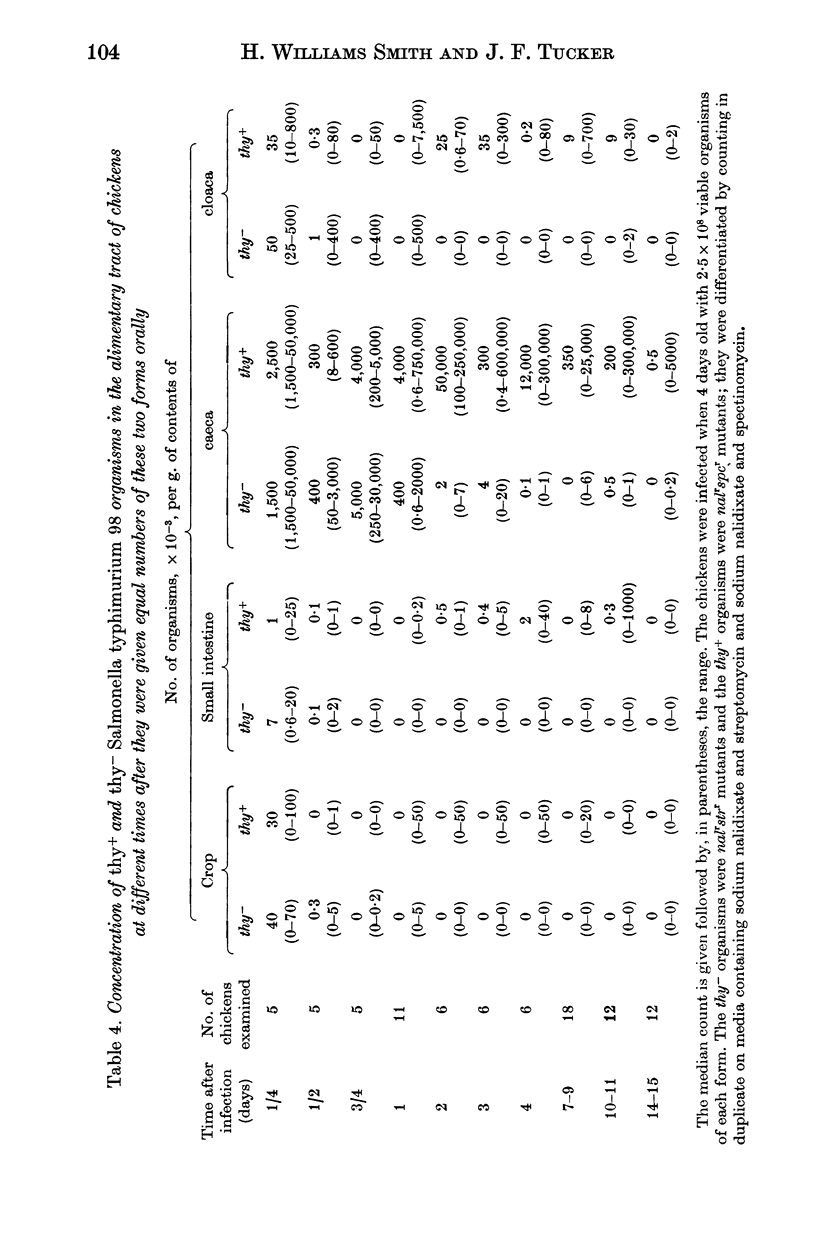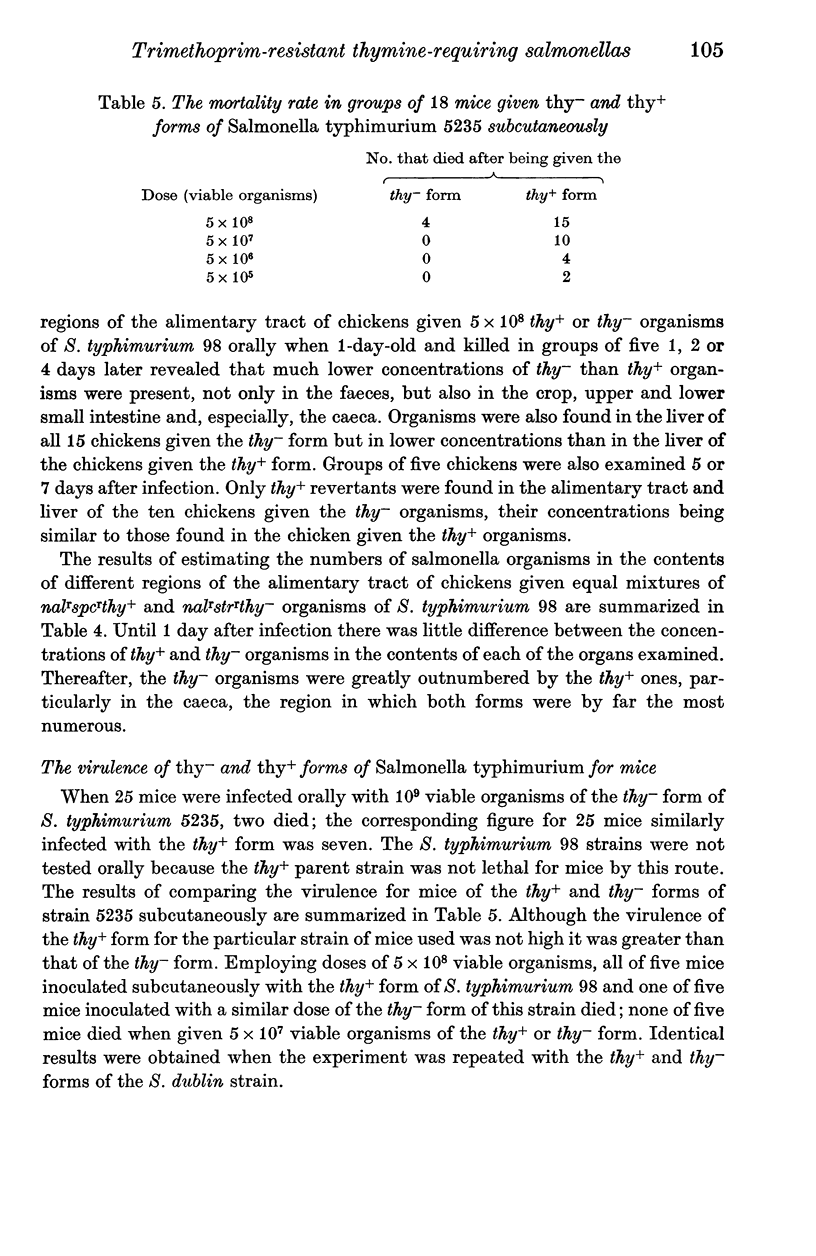Abstract
A thymine-requiring (thy-), trimethoprim-resistant (tmpr) mutant isolated from the faeces of chickens experimentally infected with salmonella typhimurium and treated with mixture of trimethoprim and sulphadiazine was less virulent for chickens than the parent strain and a thy+tmps revertant prepared in vitro from the mutant. The difference in chicken-virulence was more noticeable when the strains were administered orally than when they were administered subcutaneously. All tmpr mutants prepared in vitro from four other salmonella strains were also thy-; those tested were less virulent for chickens and mice than their parent strains. After oral infection, thy- salmonella organisms were found much less commonly in the alimentary tract of chickens then were thy+ organisms. This was especially so in the caeca, the principal site of colonization of both the thy+ and thy- organisms. Relatiely high concentrations of thymine or related compounds were found in the contents of all regions of the alimentary tract of chickens except the caeca; the caeca usually contained low or undetectable concentrations. The thy- salmonella strains would not grow on one brand of briliant green agar because of its deficiency in thymine; their colonial and appearance on other kinds of media used for isolating salmonellae from clinical material was often 'un-salmonella-like'.
Full text
PDF











Selected References
These references are in PubMed. This may not be the complete list of references from this article.
- BACON G. A., BURROWS T. W., YATES M. The effects of biochemical mutation on the virulence of Bacterium typhosum; the loss of virulence of certain mutants. Br J Exp Pathol. 1951 Apr;32(2):85–96. [PMC free article] [PubMed] [Google Scholar]
- Barker J., Healing D., Hutchison J. G. Characteristics of some co-trimoxazole-resistant Enterobacteriaceae from infected patients. J Clin Pathol. 1972 Dec;25(12):1086–1088. doi: 10.1136/jcp.25.12.1086. [DOI] [PMC free article] [PubMed] [Google Scholar]
- Datta N., Hedges R. W. Trimethoprim resistance conferred by W plasmids in Enterobacteriaceae. J Gen Microbiol. 1972 Sep;72(2):349–355. doi: 10.1099/00221287-72-2-349. [DOI] [PubMed] [Google Scholar]
- Devriese L. A., Hommez J. Thymine-requiring Escherichia coli mutants isolated from animals. An unusual type of resistance to trimethoprim. Zentralbl Veterinarmed B. 1974 Mar;21(3):211–215. doi: 10.1111/j.1439-0450.1974.tb00494.x. [DOI] [PubMed] [Google Scholar]
- FORMAL S. B., BARON L. S., SPILMAN W. Studies on the virulence of a naturally occurring mutant of Salmonella typhosa. J Bacteriol. 1954 Jul;68(1):117–121. doi: 10.1128/jb.68.1.117-121.1954. [DOI] [PMC free article] [PubMed] [Google Scholar]
- Okubadejo O. A., Maskell R. M. Thymine-requiring mutants of Proteus mirabilis selected by co-trimoxazole in vivo. J Gen Microbiol. 1973 Aug;77(2):533–535. doi: 10.1099/00221287-77-2-533. [DOI] [PubMed] [Google Scholar]
- Pinney R. J., Smith J. T. Joint trimethoprim and sulphamethoxazole resistance in bacteria infected with R factors. J Med Microbiol. 1973 Feb;6(1):13–19. doi: 10.1099/00222615-6-1-13. [DOI] [PubMed] [Google Scholar]
- Smith H. W., Tucker J. F. The effect of antibiotic therapy on the faecal excretion of Salmonella typhimurium by experimentally infected chickens. J Hyg (Lond) 1975 Oct;75(2):275–292. doi: 10.1017/s0022172400047306. [DOI] [PMC free article] [PubMed] [Google Scholar]
- Tapsall J. W., Wilson E., Harper J. Thymine dependent strains of Escherichia coli selected by trimethoprim-sulphamethoxazole therapy. Pathology. 1974 Apr;6(2):161–167. doi: 10.3109/00313027409068980. [DOI] [PubMed] [Google Scholar]


